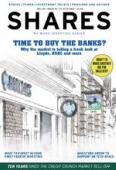Archived article
Please note that tax, investment, pension and ISA rules can change and the information and any views contained in this article may now be inaccurate.
What to expect in your first year of investing

Consumers are feeling the pain from both a rising cost of living as a result of higher inflation and low returns from their savings in the bank. We believe that will result in more people shifting any spare cash into the stock market in an effort to earn a higher return on their money.
This article will help anyone new to investing to better understand the thought process in terms of selecting investments and what you might expect to happen in the first year.
Four questions to answer
AJ Bell investment research director Russ Mould says that before you start you need to answer four questions:
Patrick Connolly, head of communications at financial advice firm Chase de Vere, says: ‘Investing in individual shares is high risk. You can reduce these risks by investing into a wide range of shares through investment funds. This will be a sensible approach for most people.
‘You should look to invest tax efficiently and for most people this will mean using ISA and pension wrappers.
‘Pensions give initial tax benefits but are inflexible for younger people whereas ISAs can also be tax efficient and, with stocks and shares ISAs, you can access your money whenever you want.’
Invest once or in stages?
Most investment platforms give you the option of investing with
a lump sum or drip feeding money into the markets whenever you want.
Let’s suppose though you have set your goals and bought some investment funds. What can you expect in the first year of investing, what common pitfalls do first-time investors face and how often should you check on your performance?
The first point to make is you should not expect too many fireworks from your investments in the first 12 months, if you do then something is probably going wrong.
Mould says: ‘When financial markets work well and are used properly they are get-rich slow mechanisms, not a slot or fruit machine on a pier.’
Don't tinker too often
It is easy to monitor your performance online but Mould reckons you should be checking your portfolio at most around once a month in the early days and perhaps once a quarter thereafter. Connolly reckons a bi-annual check is sufficient.
If any of your investments are not performing in line with your expectations, then you need to consider why this might be the case.
You might not be managing them efficiently enough or you could be failing to close out loss-making positions before they do real damage to your portfolio.
Perhaps you have been too confident and attempted to call the market, leading to an imbalanced portfolio. Most experts agree there is a strong case for diversifying across industries, geographies and asset classes.
Remember the risks
Mould adds: ‘Too many inexperienced investors think too much about reward but not enough about risk.
‘You should spend your time stress-testing your portfolio picks, asking yourself what you could have got wrong and what the implications for your portfolio might be if events do take an unexpected turn.’
There is no shame in making mistakes – after all, there’s not a single investor who can claim to have gotten it right 100% of the time – but the important thing is to ensure you know why they happened.
For the most part, you should resist the temptation to tinker with your portfolio too frequently.
There are two good reasons for this. First, true investing is about taking a long-term view and buying and holding quality investments.
Second, if you trade too frequently fees, commission and other levies like stamp duty will erode your returns.
Watch out for fads
Connolly at Chase De Vere warns against putting too much your cash into fashionable stocks and funds. Don’t get swayed by investments just because they are at the top of the performance tables. Strong recent performance should be seen as a warning sign rather than as an opportunity to buy, as investment gains have already been made and so you risk jumping in at the top of the market.
The end of your first year as an investor provides an opportunity to give your portfolio a health check.
Check the current allocation of assets in your portfolio and ensure it is in line with your strategy. If exposure to one asset class has fallen below or risen above your targeted threshold, consider buying and selling accordingly.
Investing isn’t easy but a bit of care and attention can help to keep you on the right path. Ultimately you will need to be patient and not expect instant gains.
How to calculate the real return from your investments
Start with the current value of your investments.
Subtract the value at the beginning of the period you’re assessing (such AS 12 months ago).
Add any income or dividends paid out in that time, if they have not already been included in the current value.
Subtract any fees, trading costs, administration or legal charges – this gives you the actual return.
Divide the actual return by the value at the start of the period and multiply by 100 – this gives you the rate of return as a percentage.
Deduct the rate of inflation over the period (for example, it is currently 2.9%) – this gives you a quick figure close to the total real return from the investment over the period.
Important information:
These articles are provided by Shares magazine which is published by AJ Bell Media, a part of AJ Bell. Shares is not written by AJ Bell.
Shares is provided for your general information and use and is not a personal recommendation to invest. It is not intended to be relied upon by you in making or not making any investment decisions. The investments referred to in these articles will not be suitable for all investors. If in doubt please seek appropriate independent financial advice.
Investors acting on the information in these articles do so at their own risk and AJ Bell Media and its staff do not accept liability for losses suffered by investors as a result of their investment decisions.
Issue contents
Big News
Editor's View
Great Ideas
Great Ideas Update
Investment Trusts
Larger Companies
Main Feature
Money Matters
Smaller Companies
Story In Numbers
- Worst Performing Engineers
- Best Performing UK Engineers
- Surge in butter price points to looming supply shortage
- Odd share price activity ahead of 19% of UK takeovers in 2016
- Australia cuts export earnings forecast by A$13bn
- 3,142% gain made on Domino’s
- Soaring demand for cyber coverage
- Brand Architekts does the business

 magazine
magazine












